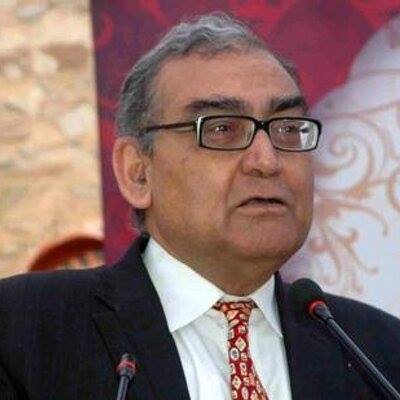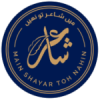
Justice Katju on What is Urdu?
Urdu is the language which was created by the superimposition of some features and vocabulary of the Persian language on a Hindustani (Khariboli) foundation. Thus, Urdu is a language created by the combination of two languages, Persian and Hindustani. It is for this reason that at one time it was called `Rekhta’ which means “hybrid” or “mixed” and implies that it contained Persian and Hindvi/Hindi.
“Rekhta ke tumhi to ustaad nahin ghalib
Kahte hain agle zamaana me koi Mir bhi tha”
Thus Urdu is a special kind of Hindustani (or Khariboli), not a special kind of Persian. I am emphasizing this because had Urdu been a special kind of Persian it would have been a foreign language. The fact that it is a special kind of Khariboli (or Hindustani) shows that it is a desi or indigenous language. This answers the criticism of those who call Urdu a foreign Language. Arabic and Persian are foreign languages, but Urdu is an indigenous language. We must, now, first understand something about Khariboli (or Hindustani) which is the
foundation on which Urdu was built.
WHAT IS KHARIBOLI ?
Khariboli is simple or spoken Hindi, as contrasted to literary Hindi which is used by many writers and public speakers. Khariboli is an urban language. It is the first language of the common man in the cities of what is known as the Hindi speaking belt (Uttar Pradesh, Bihar, Rajasthan, Madhya Pradesh, Delhi, Haryana, Himachal Pradesh, etc.) and is the second language in the cities of many parts of the non-Hindi speaking belt, not only in India but also in Pakistan.
ABOUT PERSIAN
For centuries Persian was the court language of India. This was because Persian had been highly developed in Persia by writers like Firdausi, Hafiz, Sadi, Roomi, Umar Khayyam, etc. as a language of culture, grace and sophistication, and it spread to large parts of the oriental world. Persian poets developed highly sophisticated forms of poetry e.g. ghazal, qaseeda, masriya, rubaiyat, etc. Urdu poetry is in a sense continuation of Persian poetry but in a totally different setting and a different language. Of all these forms, the ghazal is the most popular. It is in fact a marvel of condensation, and most Urdu writers have used it in most of their poetry. It is characterized by qaafiya, radeef, matla and maqta
COMMON MAN IN INDIA LOVES URDU
Since Urdu was the common man’s language it was loved by the common man, and is loved even today.
(1) Even today Hindi film songs are in Urdu, for the voice of the heart will be in one’s own language, however, much some people may try to suppress it. I remember when I was young my generation used to sing –
“ae dil mujhe aisi jagah le chal jahan koi na ho”
or
“dil dhoondata hai phir wahi fursat ke raat din”
and we never realized at that time that these film songs are verses from the great poet Ghalib. We also sang ‘Jinhe naaz hai hind par wo kahaan hain’ which is the simplified form of Sahir Ludhianvi’s verse ‘Sanaa khwaan-e-taqdees-e-mashrik kahaan hain’ (song in the Hindi film ‘Pyaasa’). Today the young generation sings ‘Munni badnaam hui’ and ‘Sheela ki jawaani’, which I regard as nonsense.
(2) Hindi writers who have an Urdu background e.g. Premchand, Kishan Chand, Rajender Singh Bedi, Prof. Gopi Chand and Malik Ram are most accepted even in the Hindi world. Urdu is loved by the people of India because it has grown among the people. Urdu literature is a literature of protest, protest against the afflictions of the common man and against injustice. Everyone knows the famous lines of Ram Prasad Bismil:
“Sarfaroshi ki tamanna ab hamaare dil mein hai”
Urdu poetry has protested against ritualism, formalism, and oppressive or antiquated social customs (in this sense it can be said to be a successor to Kabir’s poetry, though of course it is much more sophisticated). Thus Ghalib writes :
“Nahin kuch subha-o-junnaar ke phande mein geerayi
wafadaari mein sheikh-o-barhaman ki aazmaaish hai”
i.e. “The amulet (of a Muslim) or the sacred thread (of the Hindu) is not very material. The test of a Sheikh or Brahman is his loyalty (to his ideals or principles)”.
We may here also refer to the short stories of Saadat Hasan Manto, particularly about the horrors of partition e.g. `Thanda Gosht’, ‘Tithwaal ka kutta’, ‘Khol do’, etc. Being the language of the common man in modern India Urdu is almost entirely secular. Some of the greatest Urdu poets are almost anti-religious.
Thus the great poet Mir writes :
“Mir ke deen-o-mazhab ko tum poonchte kya ho unne to
kashka kheencha dair mein baitha kab ka tark islaam kiya”
Similarly Ghalib writes:
“Imaan mujhe roke hai to kheenche hai mujhe kufr
kaaba mere peeche hai, kaleesa mere aage”
i.e. “Faith is stopping me, while atheism is pulling me forward. Kaaba is behind me, the Church is in front.”
Here the word Kaleesa’ only ostensibly meansChurch’, but its real meaning is modern civilization. Thus Ghalib, like many Urdu writers, is opposed to feudal civilization and commends modernism.
Urdu literature has Sufi influence. The Sufis were the liberals among the Muslims, and not the bigoted. They spread the message of universal love among all humans, whatever their religion, caste, etc. Also since Sufis communicated with the laity in the common man’s language, they contributed to the growth of Urdu. Among the modern Urdu poets Sahir Ludhianvi is outspokenly atheistic. Consider the sheer pathos in these simple words of Ghalib:
“Ranj se khoogar hua insaan to mit jaata hai ranj
mushkilen itni pari mujhpar ki aasaan ho gayeen”
Justice Markandey Katju|email: justicekatju@gmail.com|

